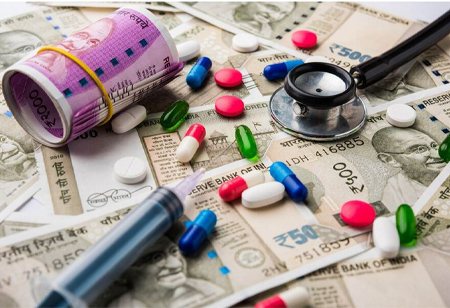Hridkamal Roy, Assistant Editor, India Pharma Outlook

The Pradhan Mantri Bhartiya Janaushadhi Pariyojana (PMBJP) has achieved yet another landmark in the history of generic drugs and sold medicines worth 1000 Crore INR last year. The generic medicines manufacturing segment in India is currently undergoing close to 7% CAGR and is poised for much growth in the coming years with the emergence of several businesses involved with the production of generic drugs. There have been several developments in generics manufacturing and products have reached consumers and highly subsidized prices that have given serious competition to branded drugs in all segments. Worth mentioning that the Joe Biden administration welcomed a plan from the Government of India last year to compete and move China out of its position as a market leader in the production of ingredients for generic pharmaceuticals that get supplied to the US.
“In developing countries like India, government bodies and other regulatory bodies have pushed manufacturers to launch effective generic drugs supporting pharma market growth. The introduction of 3-D printing technology helps in manufacturing generic medicines with varying release dates and tastes and has pushed the share of generic drugs in pharma industry”, mentioned VM Jain, MD, Arham Pharmaceuticals Limited to the media.
Native pharmaceutical manufacturers have been vigilant about the competition against branded patented drugs and always looking for ways to beat it through definitive business strategies. Because a generic version cannot be produced unless the patent for a formulation expires, other ways like conducting advanced R&D and going with strategic partnerships can be adopted in order to stay ahead in the market.
The competition between branded and generic drugs has a long history in the global pharmaceutical industry. When it comes to a developing country like India where API manufacturing is in a growth phase, this competitiveness is a growing reason of concern for the pharma companies. There have been several instances, especially in the case of patented cancer drugs where foreign manufacturers have failed to renew patents and native companies started off with the production of the generic versions.
To give an example, after the expiry of the patent for the formulation of Gleevec tablets by Swiss company Novartis, generic versions in the name of imatinib mesylate is currently being produced by native companies like Natco Pharma, Lupin, and others. The generic versions hit the market at one-tenth the price of the initial patented product. In this regard, Novartis had put forward a plea in court to renew the patent but it was rejected thus enabling Indian companies to produce the generic version.
A somewhat similar incident took place for German manufacturer Bayer’s product named Nexavar which was created for the treatment of blood cancer. After the expiry of the patent, the company was unable to renew it in a court of law and native manufacturers like Dr. Reddy’s Laboratories are now producing the generic version of that called Sorafenib at much lower prices.
Patented products are able to provide protection against generic drugs’ competition only until the expiry of the patent. In order to drive growth, companies must invest time, effort and capital into research and development for the development of new molecules and formulations. Though a generic drug is supposed to have the same API as the branded drug, manufacturers can execute innovation in the formulations. Novel formulations that are developed by generic drug manufacturers can improve bioavailability, stability and patient compliance of the medications.
In this regard, Generic Aadhar is one of the fastest-growing pharmaceutical companies in the country that manufactures generic medicines with the help of advanced R&D that have proved to have more efficacy than branded medicines. The company has developed many formulations in the generic range and is offering the products at highly subsidized prices to the people of the country and is able to overcome the competition through pricing.
When it comes to generics manufacturing, advanced technology and R&D are a must. Strategic partnerships of Indian pharmaceutical companies with companies from other countries can mean development for both parties in terms of product licensing, technology transfer, and knowledge transfer. There will always be aspects where one is forward and one lacks behind. Collaborative efforts can bring about substantial growth in manufacturing and supply and make generic medicines more accessible to consumers in both countries.
To give an example, India and Kenya have jointly collaborated with a common goal to improve access to medicines and increase the export of generic drugs. This collaborative effort by both countries will not only help in addressing healthcare-related problems but also boost economic growth for both nations. This is set to change the global healthcare ecosystem by improving consumer access to affordable medicines. India's rich expertise in manufacturing high-quality generic drugs will be able to ensure the availability of life-saving medications for patients in need, particularly across Africa.
There are various other measures that generic drug manufacturers can follow include focusing on supply chain optimization, regulatory compliance strategies, and niche markets in order to overcome challenges and maintain a competitive edge in the market.